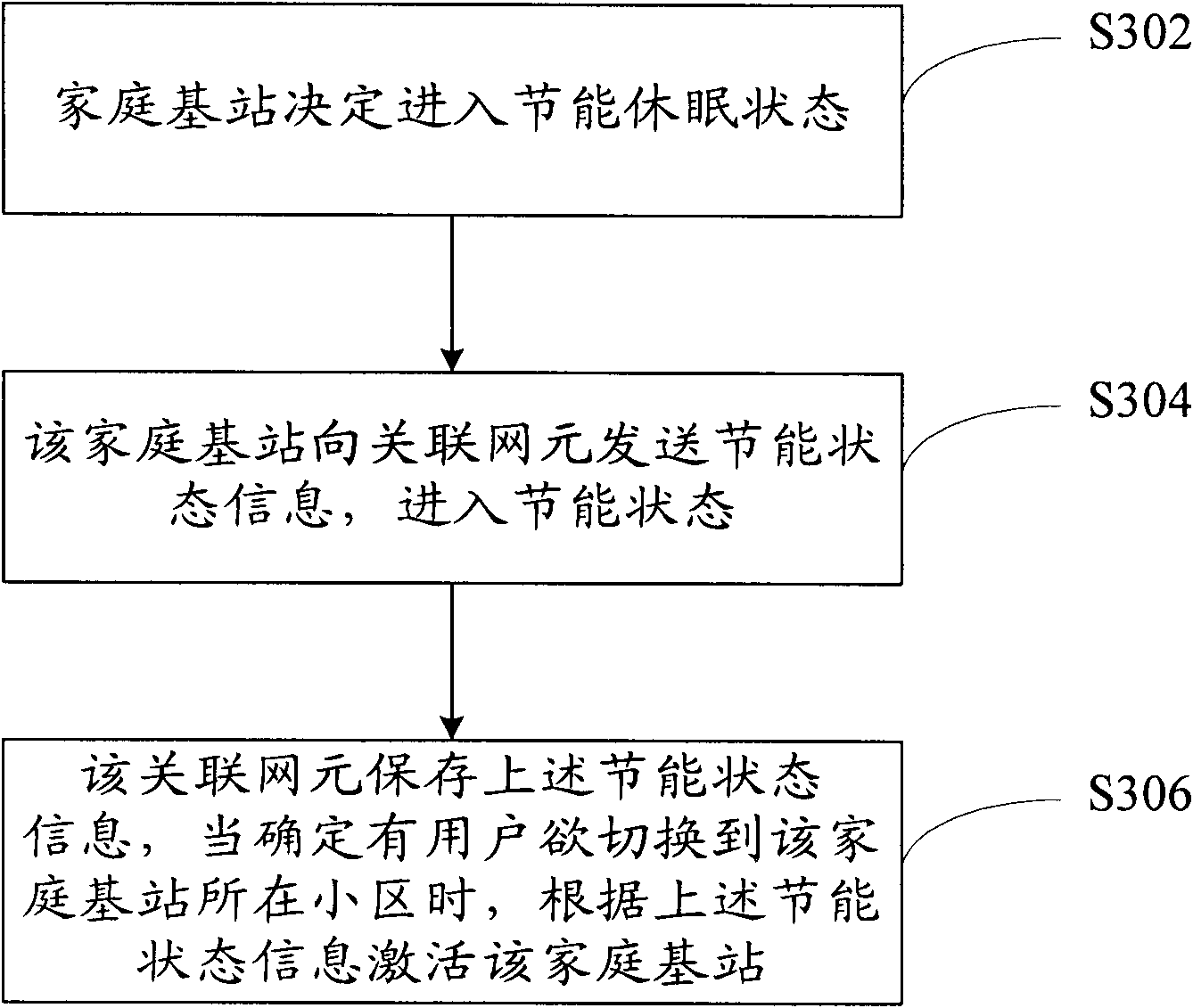Method and system for controlling energy conservation of Home (e) NodeB, Home (e) NodeB and network element
A technology for home base stations and network elements, which is applied in the directions of network topology, energy consumption reduction, electrical components, etc., can solve the problem of high power consumption of home base stations, and achieves the effect of being beneficial to energy conservation and environmental protection, and solving the problem of high power consumption.
- Summary
- Abstract
- Description
- Claims
- Application Information
AI Technical Summary
Problems solved by technology
Method used
Image
Examples
Embodiment 1
[0052] When the home base station in this embodiment decides to enter the energy-saving state, it notifies the neighbor home base station of the energy-saving state information. Figure 4 The illustrated scenario where the home base station is distributed under the macro base station eNB is described as an example. The access attribute of the home base station HeNB A is a closed access mode, and the cell where it is located is a closed cell. The access of the home base station HeNB B in the neighboring cell The access attribute is a closed access mode or a hybrid access mode, and the cell where it is located is a closed cell or a hybrid cell. see Figure 5 The flow chart of the method for controlling the energy saving of the home base station is shown, the method includes the following steps:
[0053] Step S502: Home base station A measures and finds that the current load of the cell is very low or does not allocate any resources to serve the UE, and home base station A decid...
Embodiment 2
[0064] When the home base station in this embodiment decides to enter the energy-saving state, it notifies the macro base station of the energy-saving state information. In this embodiment, the Figure 4 The illustrated scenario where the home base station is distributed under the macro base station eNB is taken as an example for illustration, and the access attribute of the home base station HeNB A is a hybrid access mode or an open access mode. see Image 6 The flow chart of the method for controlling the energy saving of the home base station is shown, the method includes the following steps:
[0065] Step S602: Home base station A measures and finds that the current load of the cell is very low or does not allocate any resources to serve the UE, and home base station A decides to enter an energy-saving dormant state.
[0066]Step S604: In order to let neighboring cells know that it has entered the energy-saving mode, before entering the energy-saving mode, HNB A sends an ...
Embodiment 3
[0076] When the home base station in this embodiment decides to enter the energy-saving state, it notifies the macro base station of the energy-saving state information, and the UE wakes up the home base station through a PI instruction. This embodiment takes Figure 4 The scenario where the shown home base stations are distributed under the eNB of the macro base station is taken as an example to illustrate, see Figure 7 The flow chart of the method for controlling the energy saving of the home base station is shown, the method includes the following steps:
[0077] Step S702: the home base station A measures and finds that the current load of the cell is very low or does not allocate any resources to serve the UE, and the home base station A decides to enter an energy-saving dormant state.
[0078] Step S704: In order to be able to enter the dormant mode, the HNB A needs confirmation from the macro base station. The home base station A sends an energy-saving state request ...
PUM
 Login to View More
Login to View More Abstract
Description
Claims
Application Information
 Login to View More
Login to View More - R&D
- Intellectual Property
- Life Sciences
- Materials
- Tech Scout
- Unparalleled Data Quality
- Higher Quality Content
- 60% Fewer Hallucinations
Browse by: Latest US Patents, China's latest patents, Technical Efficacy Thesaurus, Application Domain, Technology Topic, Popular Technical Reports.
© 2025 PatSnap. All rights reserved.Legal|Privacy policy|Modern Slavery Act Transparency Statement|Sitemap|About US| Contact US: help@patsnap.com



